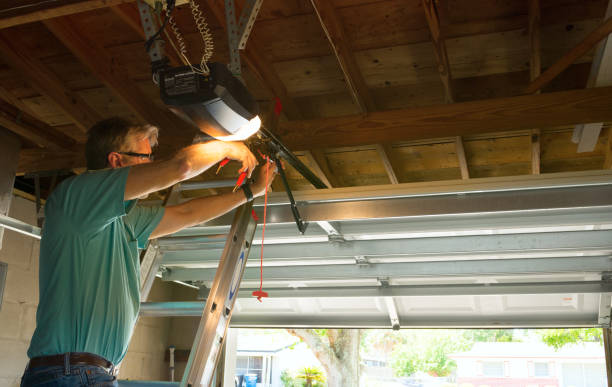In today’s world, a custom garage door installation can significantly enhance the curb appeal and functionality of your home. With a variety of designs, materials, and technologies available, homeowners have more options than ever to create a garage door that perfectly matches their style and needs. This guide will walk you through the essential steps to design and install your ideal custom garage door.
Why Choose Custom Garage Door Installation?
Personalized Aesthetics
One of the primary reasons homeowners opt for custom garage door installation is the ability to personalize the aesthetics of their home. With custom designs, you can select from a wide range of colors, materials, and finishes to complement the overall look of your property. Whether you prefer a modern, sleek design or a more traditional, rustic appearance, custom options allow for complete creative freedom.
Enhanced Functionality
Custom garage doors are not just about looks; they also offer enhanced functionality. You can choose features such as insulated panels for better energy efficiency, smart technology for remote operation, and reinforced materials for added security. These tailored features ensure your garage door meets all your specific requirements.
Key Considerations for Custom Garage Door Installation
Material Selection
The material you choose for your custom garage door will significantly impact its appearance, durability, and maintenance requirements. Common materials include:
- Steel: Known for its strength and security, steel is a popular choice for custom garage doors.
- Wood: Offers a classic and timeless look but requires regular maintenance.
- Aluminum: Lightweight and resistant to corrosion, ideal for modern designs.
- Fiberglass: Durable and low-maintenance, often used in coastal areas.

Design and Style
When designing your custom garage door, consider the architectural style of your home. Here are some popular styles to consider:
- Carriage House: Mimics the look of old-fashioned carriage doors with modern functionality.
- Contemporary: Features clean lines and minimalist design, often using glass and metal.
- Traditional: Classic panel designs that suit most suburban homes.
Advanced Features
Custom garage doors can include a range of advanced features to enhance convenience and security:
- Smart Technology: Integration with smart home systems for remote access and monitoring.
- Insulation: Improved energy efficiency and noise reduction.
- Safety Features: Sensors and automatic reversal systems to prevent accidents.
The Installation Process
Choosing the Right Installer
Selecting a reputable and experienced installer is crucial for a successful custom garage door installation. Look for professionals who offer a comprehensive consultation process, allowing you to discuss your needs and preferences in detail. They should provide you with a detailed quote and timeline for the project.
Installation Steps
- Consultation and Design: Work with your installer to finalize the design, materials, and features of your custom garage door.
- Measurement and Preparation: Accurate measurements are taken to ensure a perfect fit. The installer will also prepare the site for installation.
- Fabrication: Your custom garage door is manufactured according to your specifications.
- Installation: The installer will remove your old door (if applicable) and install the new custom door, ensuring all features and functionalities are properly set up.
- Final Inspection: A thorough inspection is conducted to ensure everything is working correctly and meets your satisfaction.
Conclusion
A custom garage door installation is a worthwhile investment that enhances the beauty and functionality of your home. By carefully considering your design preferences, material choices, and advanced features, you can create a garage door that perfectly suits your needs. Working with a professional installer ensures the process is smooth and efficient, resulting in a garage door that you’ll love for years to come.

